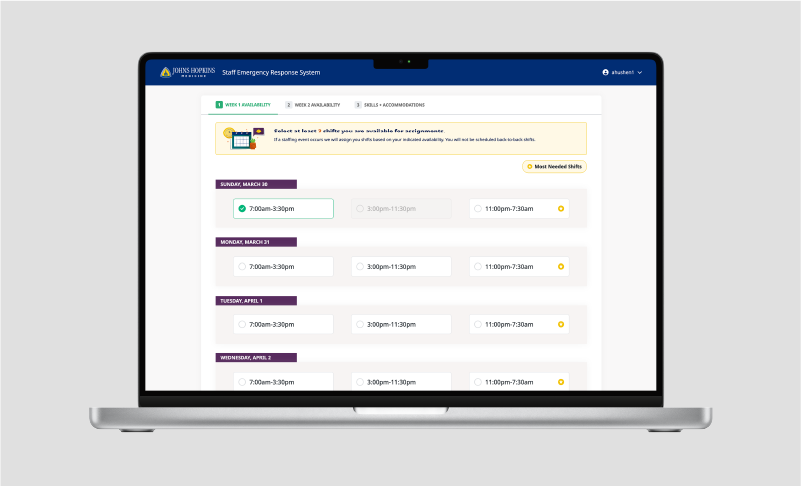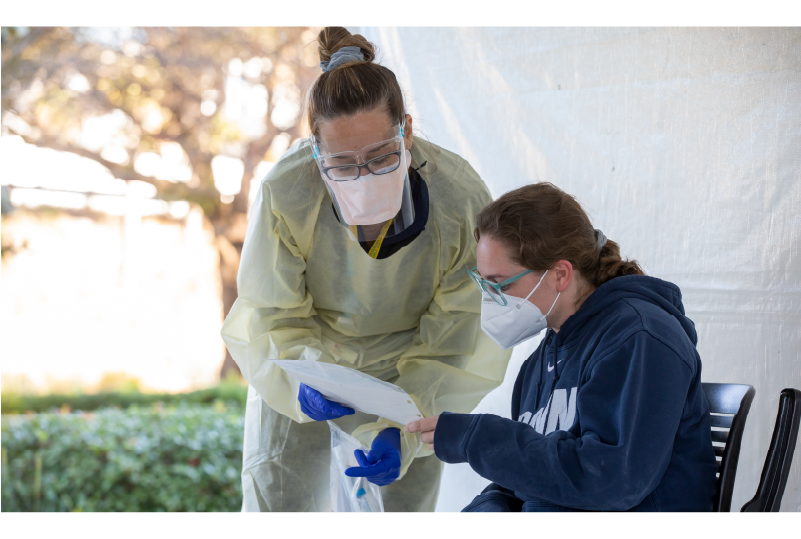
Automating Employee Redeployment Schedules During Staffing Shortages
The Staff Emergency Response System (SERS) is used to support and automate the scheduling of employees for redeployment in the event of major staffing shortages. This system is necessary to maintain business continuity and ensure critical operations are not negatively impacted.
Large-scale staffing shortages within JHH could occur as the result of widespread infectious diseases (as evidenced by the COVID-19 surge in 2020), major disasters/weather events, or work stoppage as an outcome of contract negotiations. These events can impact thousands of positions within JHH.

Efficiently and effectively redeploying internal hospital staff is essential to combat large-scale staff shortages. Through redeployment, we can maintain business and critical operations continuity.
SERS has proven successful in past contingency staffing efforts. A team of only 5-6 employees is needed to complete the scheduling/redeployment process with the support of SERS. Without SERS, the manual process would require significantly more employees, and those resources are not currently available.
The lack of a staff redeployment program could ultimately impact patient care and the safety of our work environment. Without it, we would be unable to effectively and efficiently manage a large-scale redeployment, likely requiring JHH to close beds and discontinue services to not divert or diminish patient care and safety.
The existing SERS software was no longer viable and needed replacement. SERS was hosted by the ColdFusion platform, which is currently not supported by the Web Services Group. TAG developers rewrote the application from scratch using Angular and Spring Boot. The application’s capability expanded to be able to fill jobs in the event of an emergency. SERS now allows for compilation of staff availability, automates the scheduling process, and enables rapid communication of re-assignment details.

